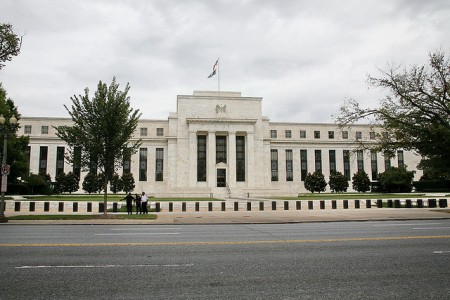In effect, the Fed has sopped up $200 billion in the last nine months in “stealth tightening.” I use the word “stealth,” because most investors, and even most Fed watchers, aren’t aware of the effects of reverse repos.
You’re probably wondering, “What’s the Fed’s ultimate plan here?”
I think that the Fed is using reverse repos to build up a hidden source of funding so that it can unwind its tightening quietly, if need be. The Fed now has $200 billion in “ammunition” that it can deploy without much (or any) fanfare, because nobody is following this closely. “Reverse Repos” isn’t the headline grabber that “Quantitative Easing” is.
As a side note, notice that the Fed’s capital is so small that you can barely see it. If the Fed were a bank subject to market forces, the slightest negative surprise would render it insolvent. But of course, it has a monopoly over the printing press, so it needn’t worry about such things.
One last reason the Fed might be secretly building a rainy-day fund: As my analysis in the newest issue of The Casey Report demonstrates, foreigners have recently stopped lending money to the US. That’s a huge problem for a country that had a $111.2 billion trade deficit in the first quarter alone, and will spend half a trillion more dollars than it takes in during 2014.
As I said earlier, the Fed has been very quiet about this repo program, so we can only surmise what its true motivations are. But as the U.S. government’s lender of last resort, the Fed may be raising this source of cash so it can lend more money to the U.S. government as foreign lending continues to dry up.
(Read the rest of the story here…)
